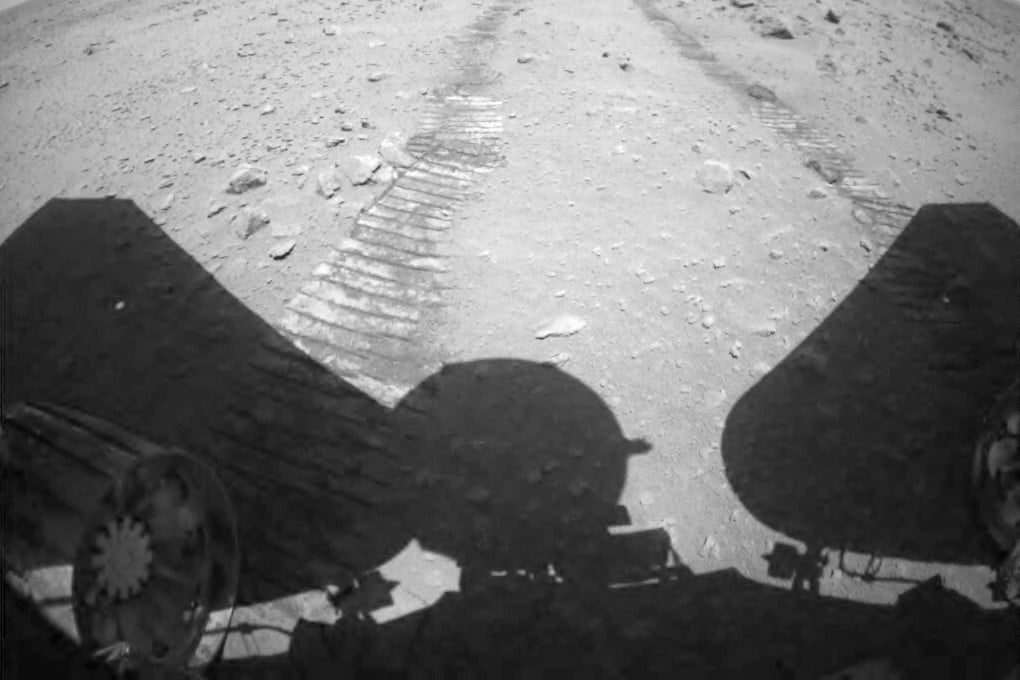Advertisement
China’s Mars rover Zhu Rong shown landing and exploring in first video
- Footage showing the rover’s descent, separation and movements on Mars released by China National Space Agency
- Sound clips from the rover, which can be used to analyse the red planet’s environment, are also released
Reading Time:2 minutes
Why you can trust SCMP

Rachel Zhangin Shanghai
China has released its first video clips of the landing and movements on Mars of its rover Zhu Rong.
The footage was released by China National Space Agency (CNSA) on Sunday along with audio of Zhu Rong leaving its lander and manoeuvring around the planet.
Footage of the rover’s descent showed the deployment of its parachute, and its separation. There were also images of the Mars landscape and the imprint left by the rover on the planet’s surface.
Advertisement
Zhu Rong forms part of Tianwen-1, China’s first independent Mars exploration mission, which also comprises an orbiter and a lander. Launched in July last year, it entered Mars’ orbit in February.

01:06
First video from China’s Mars rover Zhu Rong shows descent and exploration
First video from China’s Mars rover Zhu Rong shows descent and exploration
The rover landed in Utopia Planitia, a large plain, on May 14, making China the third country to successfully land on Mars after the United States and the Soviet Union.
Advertisement
The CNSA said Zhu Rong had been working on the surface of Mars for 42 Martian days as of Monday, having travelled a total of 236 metres (774 feet). A Martian day is 24 hours and 39 minutes.
Advertisement
Select Voice
Choose your listening speed
Get through articles 2x faster
1.25x
250 WPM
Slow
Average
Fast
1.25x